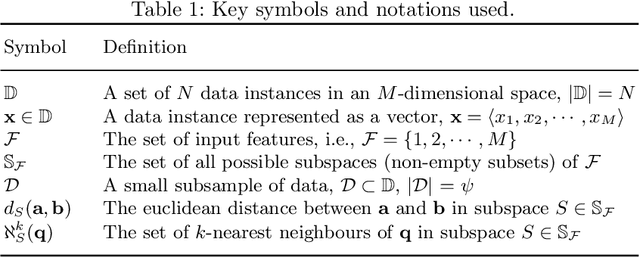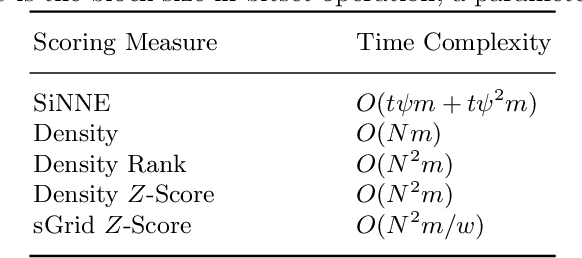A new effective and efficient measure for outlying aspect mining
Paper and Code
May 27, 2020



Outlying Aspect Mining (OAM) aims to find the subspaces (a.k.a. aspects) in which a given query is an outlier with respect to a given dataset. Existing OAM algorithms use traditional distance/density-based outlier scores to rank subspaces. Because these distance/density-based scores depend on the dimensionality of subspaces, they cannot be compared directly between subspaces of different dimensionality. $Z$-score normalisation has been used to make them comparable. It requires to compute outlier scores of all instances in each subspace. This adds significant computational overhead on top of already expensive density estimation---making OAM algorithms infeasible to run in large and/or high-dimensional datasets. We also discover that $Z$-score normalisation is inappropriate for OAM in some cases. In this paper, we introduce a new score called SiNNE, which is independent of the dimensionality of subspaces. This enables the scores in subspaces with different dimensionalities to be compared directly without any additional normalisation. Our experimental results revealed that SiNNE produces better or at least the same results as existing scores; and it significantly improves the runtime of an existing OAM algorithm based on beam search.
 Add to Chrome
Add to Chrome Add to Firefox
Add to Firefox Add to Edge
Add to Edge